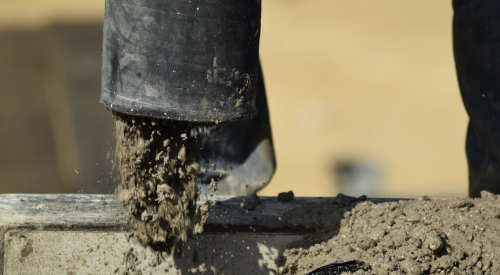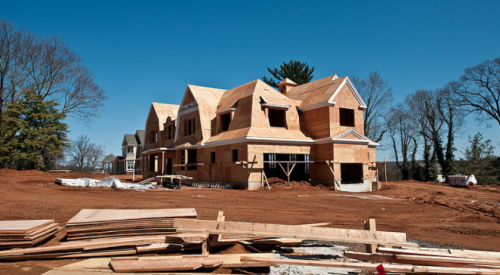The other day I received an e-mail from a customer who never contacts me unless he has a problem. We built the house he lives in back in the mid 90s and it’s one of the few jobs I would really rethink if I had it all to do over again.
It’s one of those situations you sometimes get into where you take a job because you need it and because you’re able to convince yourself that you’ll be able to work with these clients, even though your gut tells you different. We built our first true "custom" home back in 1985 and for the entire decade and a half since we’ve continued to build customs exclusively. We’ve never had enough time to attempt any spec work in all those years. Mostly we design and build and we seem to have far fewer problems with products we design in-house than those we don’t.
Unfortunately, the customer I’m referring to is one of the few who came to us with plans in hand. He and his wife were heartbroken because the builder they had been working with had to pull out on their project at the last minute citing a health condition.
| Contact Ron Jones at greenbuilder@juno.com
|
In hindsight, I suspect that the first builder had better instincts about this client than I did, and made the decision to move on for reasons that I only now understand, but I’ll never know that for sure.
The customer’s design was flawed from the outset and we worked to overcome a number of concerns. It is a two-story house, somewhat unusual for our market and typical building style. The home has a series of outdoor living areas on the upper level above interior living areas on the ground floor. From the very beginning, I was concerned with places that would be difficult to drain evenly and which presented traps for precipitation. And sure enough, we’ve been plagued ever since with a couple of problem spots.
Choosing Green
About now you may be asking yourself, "What does this have to do with ‘green building’?" The answer is that building is all about choices and execution, and taking responsibility for both. When I began to realize that I could influence the outcome of a project through the kinds of things I recommend or specify it occurred to me that there is a certain responsibility implicit in that equation.
At some point as I watched another 30-yard dumpster leave the job site on its way to the landfill I began to question whether that volume of waste material could be reduced, and what I could do to make that happen. Now, a few years later, we don’t even have a dumpster on our job sites.
Sure, we still export trash. We still contribute to the construction waste stream, but we have reduced our part by over two-thirds. Now we recycle wood and drywall scrap, cardboard and plastic packaging and any metals we can identify. We simply made a choice and then we followed through.
As time went by and I began to learn more about the impact that building has on our limited resources and just how large the footprint of a new home is on the environment, I started to examine our material choices. Now a builder has all sorts of green programs and templates to use as models to help decide between one material and another, but I didn’t even know where to start in those days. I simply began to evaluate what we were using, one item at a time.
It turned out that many of the materials we commonly specified for structural reasons—open web engineered trusses—also made it easier to achieve our energy goals by allowing us to use deeper insulation and reach higher R-values. They also allow much more flexibility in the installation of air conditioning ducts and other mechanical items. Since they are assembled from 234s and 236s they don’t demand the tree sizes necessary to yield larger dimension lumber, like 2312s for example.
Some material and product choices are less obvious. There were several years when solid surface countertops were popular in the kinds of houses we build. As I compared the quality and value of the different brands I began asking less obvious questions—what does the manufacturer do with the waste material from their process?
It turns out that one of the major national brands of solid surface material is manufactured less than an hour from where I live. I wanted to do business with them to support the local economy and job base. There were no problems with their quality and innovations either. But for me the decision was clinched when I learned that they reuse almost 100 percent of their waste material by forming it into landscape pavers, creating a separate product line in the bargain. Add to that the fact that since their product comes from a short distance away, the energy needed to transport it to the end user, my client, is minimized. It may be a secondary consideration, but worth including in the overall equation nevertheless.
Being Green
The longer you build, the more obvious it becomes that customers look to you to make recommendations. They want your opinion not only about what products work and what materials look good, but they also want to know what is durable and, more and more often, what is environmentally appropriate. New home buyers take a keen interest in quality and value, and increasingly they are interested in energy efficiency, water conservation and the quality of the indoor environment too. They are also beginning to take a closer look at the appropriateness of what they ask us to build, and where it is built.
Putting a green builder tag on your signage, or joining or even establishing a green builder program doesn’t make you a green builder, any more than wearing bib overalls and humming "Thank God I’m a Country Boy" will make you a farmer.
Being a builder—and especially a green builder—is in the execution, not just the label. It can be a good way to separate yourself from the competition in your market, but it can be fatal to your credibility if you don’t back up you claims with your actions. We work in what is probably the most conspicuously consumptive industry there is. We have to take responsibility for the decisions we make, whether they relate to land and water resources, material selections or waste management.
I find that my subcontractors, service providers and suppliers are all eager partners in trying to find ways to build "greener" homes and healthier places for our clients to live. In fact, once I mention our concerns to them, many of the people we work with proudly point out things they are already doing within their specialty to produce a more environmentally responsible result.
Regardless of whether a home we build is occupied for a lifetime by the original owners or changes hands and occupants several times, the responsibility for how it is built—including from the environmental standpoint—will always ultimately come back to rest squarely with the builder. That’s what being a builder means.
I’m sending a response back to my problematic customer today. As much as I’d like to point out the design deficiencies, list the "I told you so’s" and remind him of just how long he has been in the house, I won’t.
The note will simply say that I was his builder when we broke ground and when he moved into the house, and I’m still his builder for as long as he lives there. The agreement we made still stands and I will continue working with him to resolve any problems that arise in the house I built for him. Period.
It’s the choice I made when I accepted his confidence, and when I took his money. It’s my responsibility. I’m a builder. I just happen to be a little greener than most.











